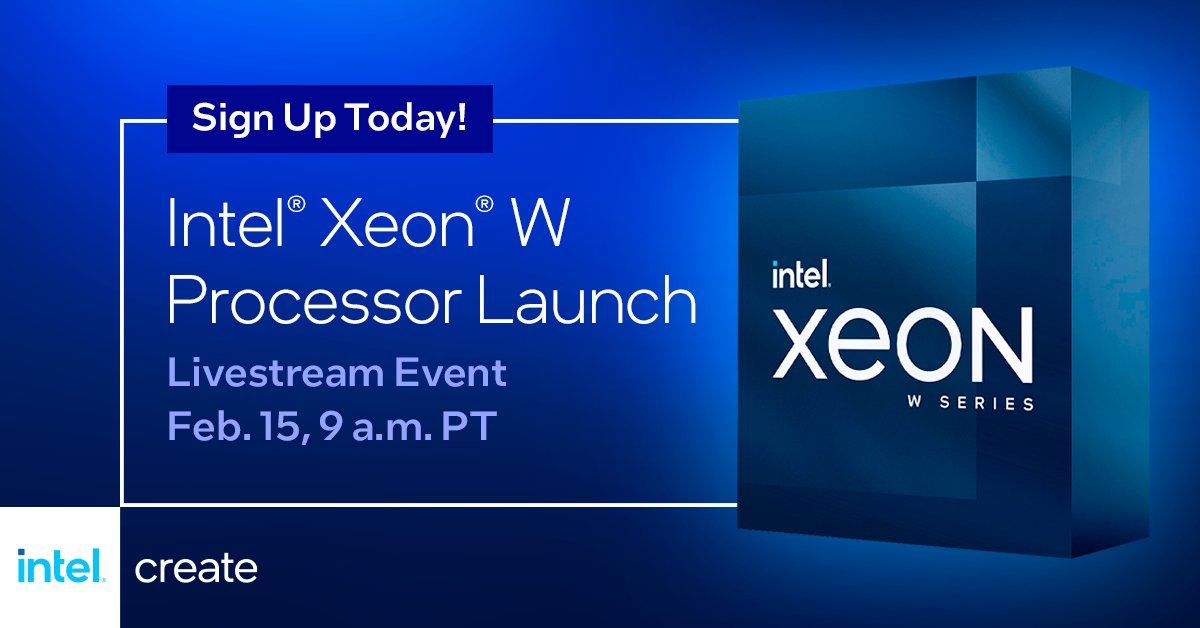mderbarimdiger
Member
- Nov 8, 2022
- 43
- 77
- 61
Does that mean all their comm gear is going up in smoke? Like all the equipment featuring the "Ridge" Tremont CPUs? Or am I reading that wrong?
I'd be skeptical of anything regarding Meteor Lake "targets" given how much of a mess that program has been. It would be nice if they did provide a large efficiency boost. But I'll believe it when I see it.
That would be promising. RPL or ADL issues are not on performance but more on efficiency. Even if there is no performance improvement and improves efficiency big time its great for the customers.
Quote from Pat GelsingerWe did change the timing of Granite Rapids, and we had a big internal debate show on should we even keep the Granite Rapids name because it was the same platform, but it was a new core on a new process. So to some degree, it was a very different product. But some said, hey, you delayed Granite Rapids. Hey, I say I enhance Granite Rapids, with a much higher performance product, a much — 18% process, a major new core, that’s 10-plus percent in the core. So a much better product and aligned to the customers’ timing. And they said, hey, Sapphire Emerald Granite was too compressed.
Isn't this largely dependent on what performance level you measure this x1.5 efficiency at?
That would be promising. RPL or ADL issues are not on performance but more on efficiency. Even if there is no performance improvement and improves efficiency big time its great for the customers.
Network Switch business. That's their Tofino line, the one they got after acquisition of Barefoot Networks a while ago. Ridge products are Network but not a switch is it?
I bet he means 10% (IPC/Perf/Efficiency) from the core alone on top of the process gains. Also, 4nm to 3nm is more a half node, not a full node.I was just scrolling past some stuff when I was working on a project, when I stumbled across this
Quote from Pat Gelsinger
Is Gelsinger trying to say 10%+ gain in IPC or performance with the GNR architecture vs redwood cove (what was supposed to go in old GNR)? Obviously I think it was a slip up, because he never really mentions any specifics about GNR again, but...
18% process is obviously referring to the gain in perf/watt from Intel 3 over Intel 4.
A major new core is something he already referenced, the new GNR on Intel 3 has a different core than GNR on Intel 4
Is 10% referring to IPC?
Or is it referring to 10% perf/watt gain? Because if Intel 3 perf and power characteristics are similar to a full node jump (18% perf gain over Intel 4 make it seem so) then isn't a 10% perf/watt gain compared to an older architecture a node behind seem kinda small?

So, I'm like 80%+ certain that the GNR definition changed (reverted?) after his remark. It sounds like he was talking about Lion Cove, but current GNR doesn't seem to use it.I was just scrolling past some stuff when I was working on a project, when I stumbled across this
Quote from Pat Gelsinger
Is Gelsinger trying to say 10%+ gain in IPC or performance with the GNR architecture vs redwood cove (what was supposed to go in old GNR)? Obviously I think it was a slip up, because he never really mentions any specifics about GNR again, but...
18% process is obviously referring to the gain in perf/watt from Intel 3 over Intel 4.
A major new core is something he already referenced, the new GNR on Intel 3 has a different core than GNR on Intel 4
Is 10% referring to IPC?
Or is it referring to 10% perf/watt gain? Because if Intel 3 perf and power characteristics are similar to a full node jump (18% perf gain over Intel 4 make it seem so) then isn't a 10% perf/watt gain compared to an older architecture a node behind seem kinda small?
10% IPC, Perf, and efficiency are completely different IMOI bet he means 10% (IPC/Perf/Efficiency) from the core alone on top of the process gains. Also, 4nm to 3nm is more a half node, not a full node.
See also:

The timeline for that would have to be pretty tight for that, no?So, I'm like 80%+ certain that the GNR definition changed (reverted?) after his remark. It sounds like he was talking about Lion Cove, but current GNR doesn't seem to use it.
It would bode well for Lion Cove it he meant 10% perf, iso-process, iso-power, but I think the statement's too ambiguous to tell, and outdated on top of that.
So combining a bit of rumor, chatter, and speculation together, I think the sequence was something like RWC (Intel 4) -> Lion Cove (Intel 3) [Pat statement] -> RWC+(?) (Intel 3). So in that sense, it would be more like a reversion to the foundation most of the work was done on. But either way, I agree that at this point, Lion Cove isn't likely. It should be easier to port around than RWC, but 3 entirely different nodes would be too much.The timeline for that would have to be pretty tight for that, no?
The development cycle for GNR is most likely going to be longer than that of RPL, at the primary basis of it being a server CPU, (that and RPL was very fast, Intel claims they shrunk the timeline by 6 months compared to ADL) but using it as a meter stick:
So 30 months out, and the Pat quote was from March 2022, assuming a end of 2024 GNR release date, would give us what, a 3 month time frame for a redesign? But also considering following ADL schedule means that we would be looking at the change in design having to be 36 months out... but chiplets should also reduce the time needed in the design phase...but GNR is also a server CPU, which I'm assuming will take longer to develop
Unless they were designing multiple GNR potential variants in parallel, I don't see another change past what Pat was talking about happening. Window just sounds way too tight for that to happen.
Also, we got the GNR announcement in mid 2021, for a likely end of year 2023 launch. 2 and a half years. The GNR redesign Pat quote is also, 2 and a half years out from it's supposed launch date.
I don't think it would use Lion Cove though, because that seems to essentially be a backport since Lion Cove seems to appear on ARL which has Intel 20A compute tiles (or TSMC 3nm). And backporting on Rocket Lake did not turn out looking so well...
It's definitely ambiguous though, but I love making mountains out of molehills haha
Why so? I though Tiger Lake was a pretty good CPU, and the only changes to that vs Sunny Cove was tweaking the cache subsystem right? I thought Icelake's initially low clocks was due to the shitty 10nm process.I wouldn't be so hasty to draw those conclusions about backporting however. Sunny Cove just wasn't a good uarch.
Oh ye I totally forgot about that. Good point.And perhaps the bigger factor was Raptor Lake also got the uncore changes, which are really what hurt it for gaming.
Seems believable given that it's Intel 4 vs Intel 7 and it will have two new cores.I'd be skeptical of anything regarding Meteor Lake "targets" given how much of a mess that program has been. It would be nice if they did provide a large efficiency boost. But I'll believe it when I see it.

Willow Cove probably made some minor backend adjustments to Sunny Cove. Pushing down power, and pushing up clocks. That sort of thing. But yes, while the clocks for Sunny Cove were clearly mostly 10nm's fault, it was a pretty huge increase in transistor count (and corresponding power and area) for the IPC gain, especially considering how long it took to come out after Skylake. In large part responsible for Intel's current PPA deficit vs AMD.Why so? I though Tiger Lake was a pretty good CPU, and the only changes to that vs Sunny Cove was tweaking the cache subsystem right? I thought Icelake's initially low clocks was due to the shitty 10nm process.
I think that "new cores" part is the subject of some debate. And also what gains Intel 4 will provide outside of powerpoint slides.Seems believable given that it's Intel 4 vs Intel 7 and it will have two new cores.
Probably an ES, or something off with power limits. It's losing to a 13900k in a task that should benefit substantially from its better memory bandwidth and AVX throughput.Early V-RAY Results for Sapphire Rapids Xeon W

Intel Xeon W7-3455 Sapphire Rapids Workstation 24-Core CPU Tested, Slower Than 24-Core Threadripper 5965WX
Intel's Sapphire Rapids Xeon Workstation CPUs are headed for an official unveiling on the 15th of February and we have more benchmark leaks.wccftech.com
Here is Another one a bit higher score but more cores..Probably an ES, or something off with power limits. It's losing to a 13900k in a task that should benefit substantially from its better memory bandwidth and AVX throughput.


Well clearly something is up. Over double the cores, and only 1/3rd faster? If that memory is meant to be DDR5-3466, then that might explain it, but that doesn't mesh too well with the Threadripper results. Eh, couple of weeks and we'll get final answers.Here is Another one a bit higher score but more cores..
View attachment 76024

V-Ray 5 Benchmark | Chaos
benchmark.chaos.com
it could be that Windows 10 just does not play nice with Sapphire RapidsWell clearly something is up. Over double the cores, and only 1/3rd faster? If that memory is meant to be DDR5-3466, then that might explain it, but that doesn't mesh too well with the Threadripper results. Eh, couple of weeks and we'll get final answers.
Hm, perhaps. Shouldn't have any particular issues though. No big.little or anything.it could be that Windows 10 just does not play nice with Sapphire Rapids
The benchmark on the website does not take advantage of AVX-512/AMX just AVX2/256I thought V-Ray was basically a best case scenario for SPR. Heavily dependent on AVX throughput.
Yeah, but even ignoring the ISA, the server core has twice the AVX throughput of the client. It should be a clear win.The benchmark on the website does not take advantage of AVX-512/AMX just AVX2/256


